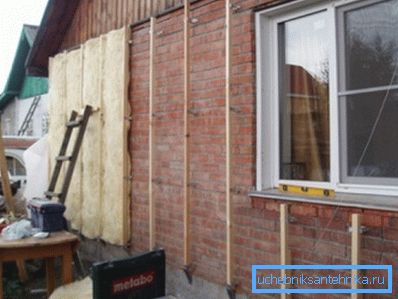Heating a private house without gas - how real it is
Gas at the moment is a great, fairly profitable fuel. Fortunately, there is a lot of it in our mighty power, but the problem is that unfortunately it is not everywhere everywhere. An alternative to gas naturally exists, because our ancestors lived, equipping the heating of a private house without gas and electricity.
We will not go to extremes and consider how to heat a house without gas today.
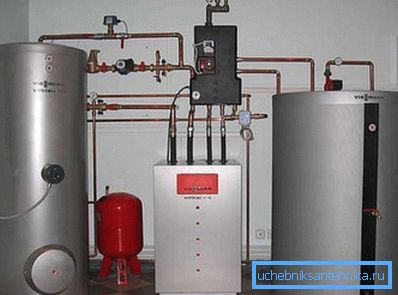
A few words about bottled liquefied gas
It should be clarified here that gas can be main, centrally supplied through pipes and liquefied, injected into cylinders or gas-holders. Often, the heating of a country house without gas supplied centrally can be arranged by delivering fuel in cylinders, but everything is not so simple.
Not everyone knows that methane prevails in the mixture supplied through pipes. If we talk about cylinders and gas holders, then liquefied propane-butane is pumped into them. These are two different substances differing in both composition and price.
If the price of 1Gcal of heat obtained from the main fuel is about 500 rubles, then the same amount of heat obtained from propane-butane will cost 2.5 thousand. rub.
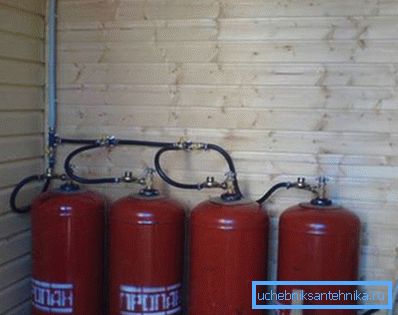
Electricity use
Heating of a country house without gas can be easily and quickly organized by an electric boiler, a convector heating or, in extreme cases, a conventional heater. The principle of operation of the boiler is quite simple, the water in the metal heat exchanger, is heated by electric, closed heating elements.
After which, by gravity or pump assistance is fed into the heating system. Boilers with automatic adjustment are considered more profitable.
Convector, in fact, is an improved version of a simple heater. It differs only in that it has air channels with natural or forced air circulation and an improved control system.

Advantages of electric heating.
- This method can be safely considered completely environmentally friendly.
- The price of the equipment is quite acceptable.
- The installation manual of such a system is extremely simple.
- Heating a wooden house without gas, only with the help of electricity, attracts with its fire safety.

What are the disadvantages.
- For the safe operation of such equipment will require the installation of a sufficiently serious wiring.
- Installation of a boiler with a capacity of more than 10 kW will require coordination in Energonadzor.
- Electricity bills will not please you, although for short-term use, let's say for a dacha, this option is quite acceptable.
Solid fuel
Heating a house without gas and electricity is most often associated with solid fuel. There are several options. Classic is considered a regular oven.
Solid fuel boilers, it is more economical and perfect equipment. Although in both cases much depends on the type of fuel.
Rustic stove
Gas-free dacha heating is often carried out using a conventional rustic stove. This method has been used for hundreds of years and still has not lost its relevance. The principle of operation is clear to anyone, fuel is put into the furnace, as a result of burning the structure heats up and transfers heat to the room.
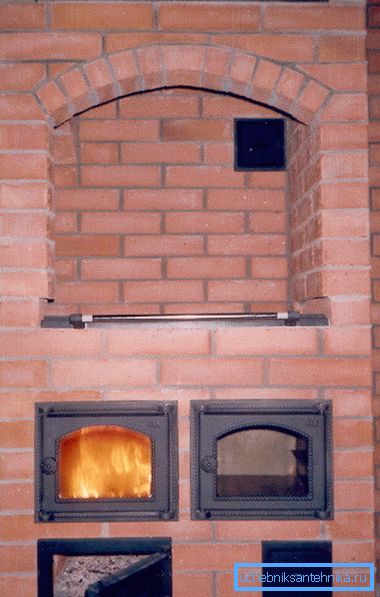
Important: in view of the simplicity and reliability of the furnace design, heating without electricity and gas can be carried out by any kind of solid fuel. It can be not only firewood, but also coal, peat or pellets.
The advantages of a rustic stove.
- The heater heats up quickly enough and gives off heat for a long time, which distinguishes it from competitors.
- There are a number of simple models that, with a strong desire, can be folded with your own hands.
- If you mount the stove in the center of the house, it will heat several rooms at once, thus eliminating the need for installing complex piping and radiators.
- Most models are equipped with a stovetop, which makes it possible to cook.
- Again, environmental safety.

What loses the rustic stove.
- A separate dry room is needed for fuel storage.
- Such heating requires constant participation. It is necessary to throw up fuel and regularly clean the ashes.
Solid fuel boilers
Energy-saving heating without gas can be carried out not only by a rustic stove heater. In modern homes, it is much more common to find a solid fuel boiler.
There are 3 common modifications of this equipment:
- classic boilers;
- pyrolysis;
- gas generator. Gas generating equipment is quite expensive, but it has the highest efficiency.
The advantages of such equipment include relatively low cost and increased safety. If we talk about the minuses, they are almost the same as in a rustic stove.
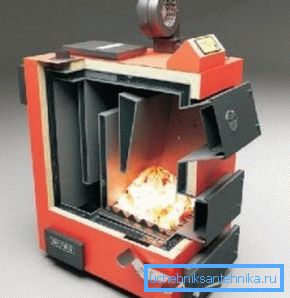
Tip: if you decide to give preference to boiler equipment, then it is better to take a universal option that can work not only on solid fuels, but also on gas or diesel. This approach is almost win-win.
Liquid equipment
Liquid heating without wood and gas is carried out using all the same boilers, they only work on diesel fuel, some models can run on kerosene or oil.
The installation of such equipment does not require coordination with the controlling authorities, plus the efficiency of petroleum products is considered one of the highest. But the price of such fuel is growing steadily, it is rather problematic to store petroleum products, so this option can hardly be called profitable.
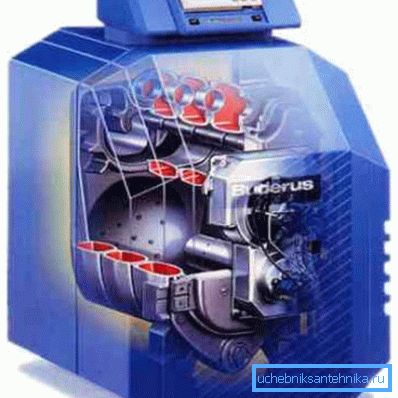
Alternative sources
Heating without gas and firewood, as well as without chimneys and bulky boilers in the house attracts more and more enthusiasts. Now you will not be surprised with the use of solar energy or wind generators.
But all these options should be approached very carefully, the advantages of such units are many. People immediately pay attention to the fact that this energy is completely free, forgetting about the cost of equipment and installation.
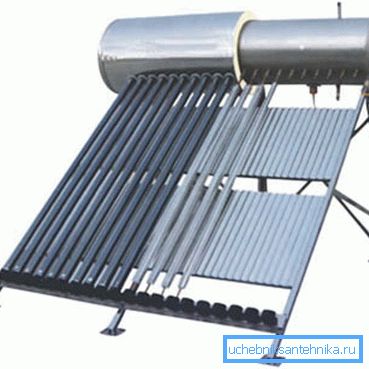
Around the world, it has now produced a genuine sensation, the so-called heat pump, such equipment is also called the eco-therm. It really works without gas and wood, using the energy of the earth or water.
The principle of operation resembles a refrigerator. Freon circulates in the system of pipes and chambers, as a result, a large amount of thermal energy is generated.
But the heat pump, together with the installation costs several dozen times more expensive than the most expensive boiler. In a private house, it will take at least 30 years to reach full payback.
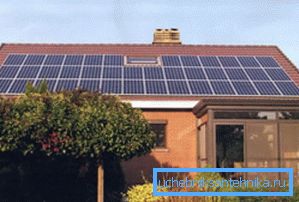
With the energy of the wind and the sun, everything is certainly not so expensive, but here is another nuance. In order for such equipment to be efficient and completely replace traditional heat sources, besides financial expenses, serious areas will be required for placement, therefore at this moment it can only be considered as ancillary.

Short in numbers
In our country, it is traditionally considered to consider thermal energy in gigacalories. The amount of Gcal spent per month varies depending on the volume of the room and the level of its thermal insulation.
Our experts have calculated the estimated price of 1 Gcal and, for example, derived the cost of heating a house with an area of 200m? different types of fuel during the season.
| Fuel | Price for 1 Gcal | Price for 200m? in season (7 months) |
| Main gas | 480r. | 10 000 rub. |
| Liquefied gas | 2400r. | 50 500r. |
| Diesel fuel | 3020r. | 63 500r. |
| Coal | 1090r. | 23 000 rub. |
| Peat | 1400r. | 29 500r. |
| Pellets | 1500r. | 31 500r. |
| Electricity | 2760r. | 58 000 rub. |
| Heat pump | 830r. | 17 500r. |
The video shows additional information on this topic.
Conclusion
At the end of this story, we would like to note that the choice of equipment and the purchase of fuel is certainly important, but the so-called passive heating or insulation of the house itself is equally important. Without such an arrangement, even the most affordable fuel will cost you a lump sum (see also the article Gas heat generators for air heating - features and types).
